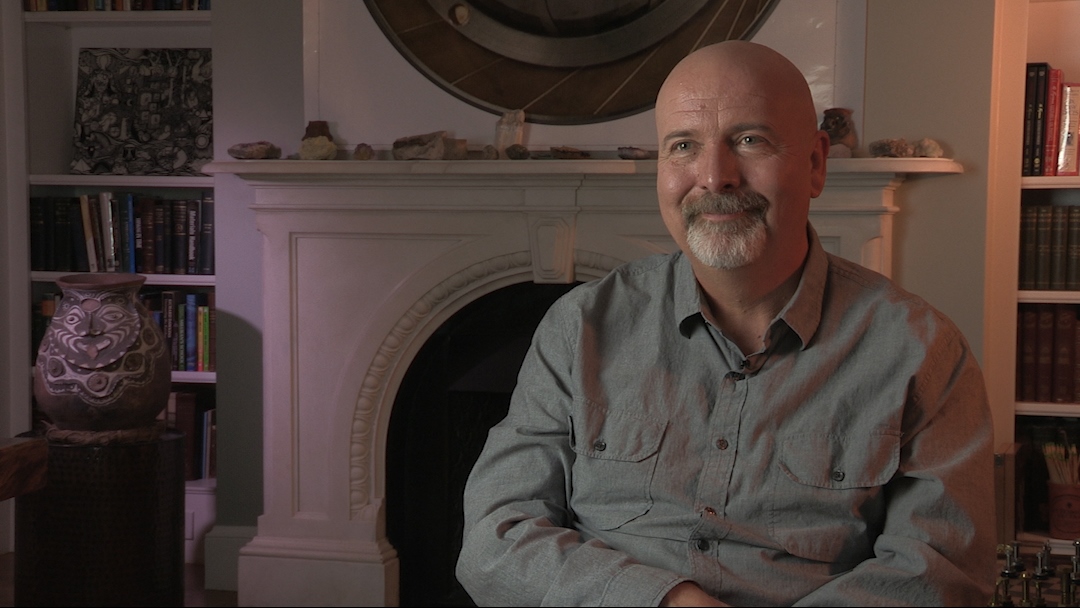NEXT STORY

My life list: An amphicar
RELATED STORIES

NEXT STORY

My life list: An amphicar
RELATED STORIES


|
Views | Duration | |
|---|---|---|---|
| 211. Getting to steer a nuclear submarine | 67 | 02:22 | |
| 212. Connection Machine and MapReduce paradigm | 72 | 03:00 | |
| 213. Programming is not what it used to be | 93 | 04:32 | |
| 214. Biology and technology become increasingly alike | 67 | 03:10 | |
| 215. Age of Enlightenment versus Age of Entanglement | 110 | 01:12 | |
| 216. The Entanglement needs a different paradigm | 92 | 03:06 | |
| 217. My life list: Climbing the Great Pyramid | 71 | 05:18 | |
| 218. My life list: Flying a helicopter | 60 | 02:08 | |
| 219. My life list: Northern Lights | 72 | 01:50 | |
| 220. My life list: Ise Shrine | 62 | 03:25 |


So there are things that are not done... we should go over the list sometime. There's still plenty that aren't. I check them off pretty regularly, but I add them even more often. Like another implausible one that was on it was the Ise Shrine, was something that in some sense is most like the 10,000 year clock. There's a shrine in Japan which is constantly being rebuilt. So every 20... it take them 20 years to build a copy of the shrine and then they move the gods from the old shrine to the new shrine and then they disassemble the old shrine and they build a new one, and that sort of tick-tock happens once every 20 years, and it's been happening for millennia now. And so... and they reconstruct all the treasures inside the shrine. And in fact, you've heard of national treasures, of the people in Japan, like a great potter or somebody who can weave kimonos. So those national treasures actually construct the treasures of the Ise Shrine. So for the next tick... and they bury the old ones. So around this garden are buried the treasures for centuries and centuries. So I had always wanted to be there for the tick, but of course only a few people can physically be there. It's very small and you have to be invited.
But a friend of mine, Dan Erasmus, heard this was on my life list and somehow made friends with people in Japan and the last tick, I got invited to be there and so we were some of the few Westerners that were actually there to witness the moving of the treasures, the tick of the shrine to the new shrine. So that was a fantastic event and we decided that... there's a tradition in Japan of a bottle keep tradition, which we've copied in the Long Now, which is you leave a bottle in the bar that's your bottle and then you come back and... so we decided to leave a... to buy a bottle at Ise and then come back in 20 years and see if it was still there. And, you know, we weren't sure that they would like this idea, but we went to a very small bar that does this and we bought a bottle of whiskey and of course we ended up telling them what we were doing and they loved this idea, so we signed the bottle and they put it like in front of them, this half-empty bottle of whiskey and they put it there right behind the bar and the barkeeper said, 'You know, if we're still in business next time the Ise shrine ticks, you can come and drink the other half of the bottle.'
W Daniel Hillis (b. 1956) is an American inventor, scientist, author and engineer. While doing his doctoral work at MIT under artificial intelligence pioneer, Marvin Minsky, he invented the concept of parallel computers, that is now the basis for most supercomputers. He also co-founded the famous parallel computing company, Thinking Machines, in 1983 which marked a new era in computing. In 1996, Hillis left MIT for California, where he spent time leading Disney’s Imagineers. He developed new technologies and business strategies for Disney's theme parks, television, motion pictures, Internet and consumer product businesses. More recently, Hillis co-founded an engineering and design company, Applied Minds, and several start-ups, among them Applied Proteomics in San Diego, MetaWeb Technologies (acquired by Google) in San Francisco, and his current passion, Applied Invention in Cambridge, MA, which 'partners with clients to create innovative products and services'. He holds over 100 US patents, covering parallel computers, disk arrays, forgery prevention methods, and various electronic and mechanical devices (including a 10,000-year mechanical clock), and has recently moved into working on problems in medicine. In recognition of his work Hillis has won many awards, including the Dan David Prize.
Title: My life list: Ise Shrine
Listeners: George Dyson Christopher Sykes
Christopher Sykes is an independent documentary producer who has made a number of films about science and scientists for BBC TV, Channel Four, and PBS.
Tags: Ise Shrine, Dan Erasmus
Duration: 3 minutes, 25 seconds
Date story recorded: October 2016
Date story went live: 05 July 2017